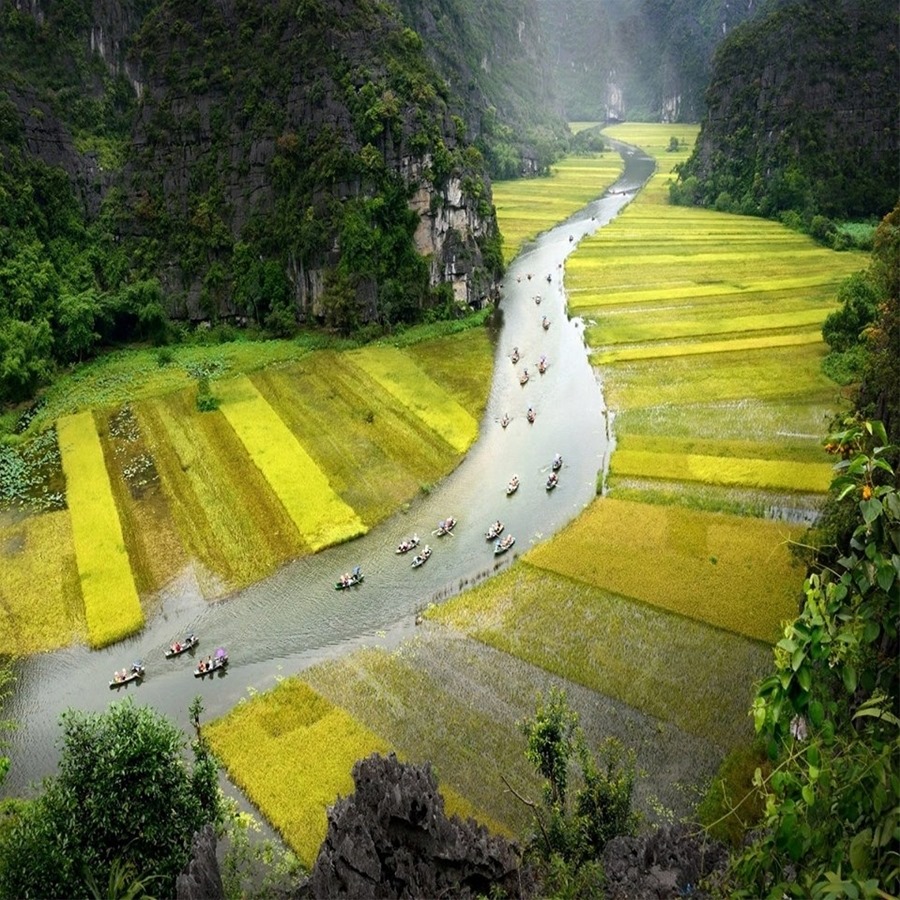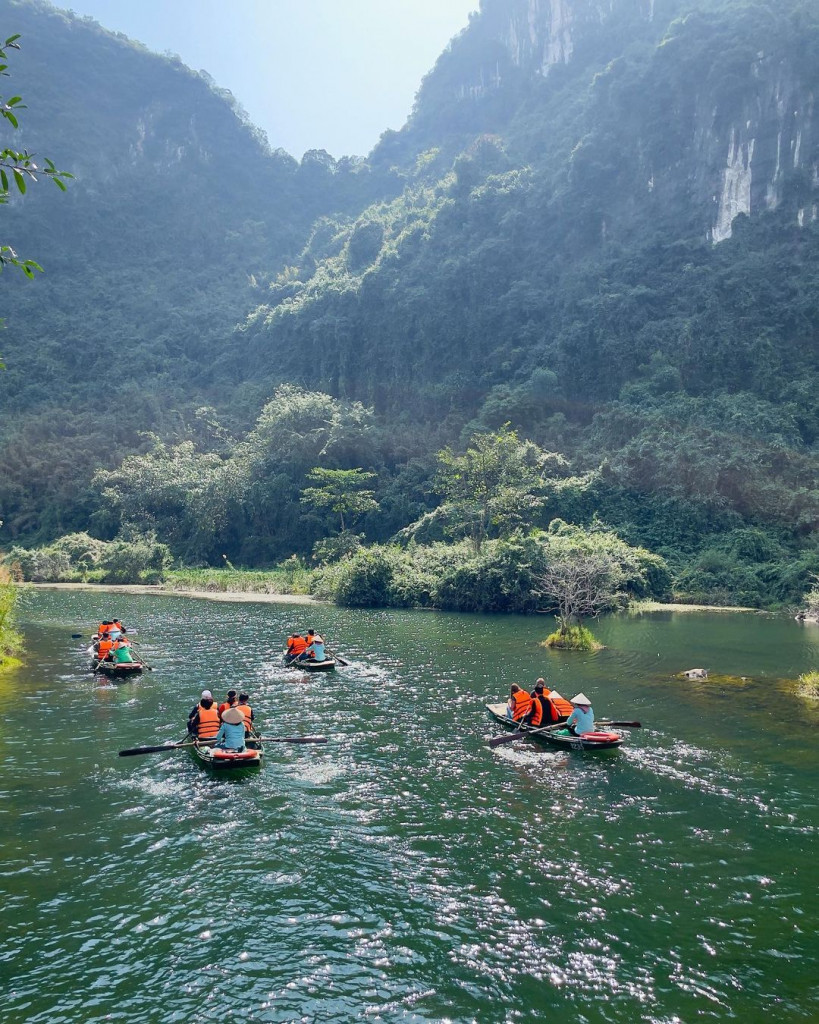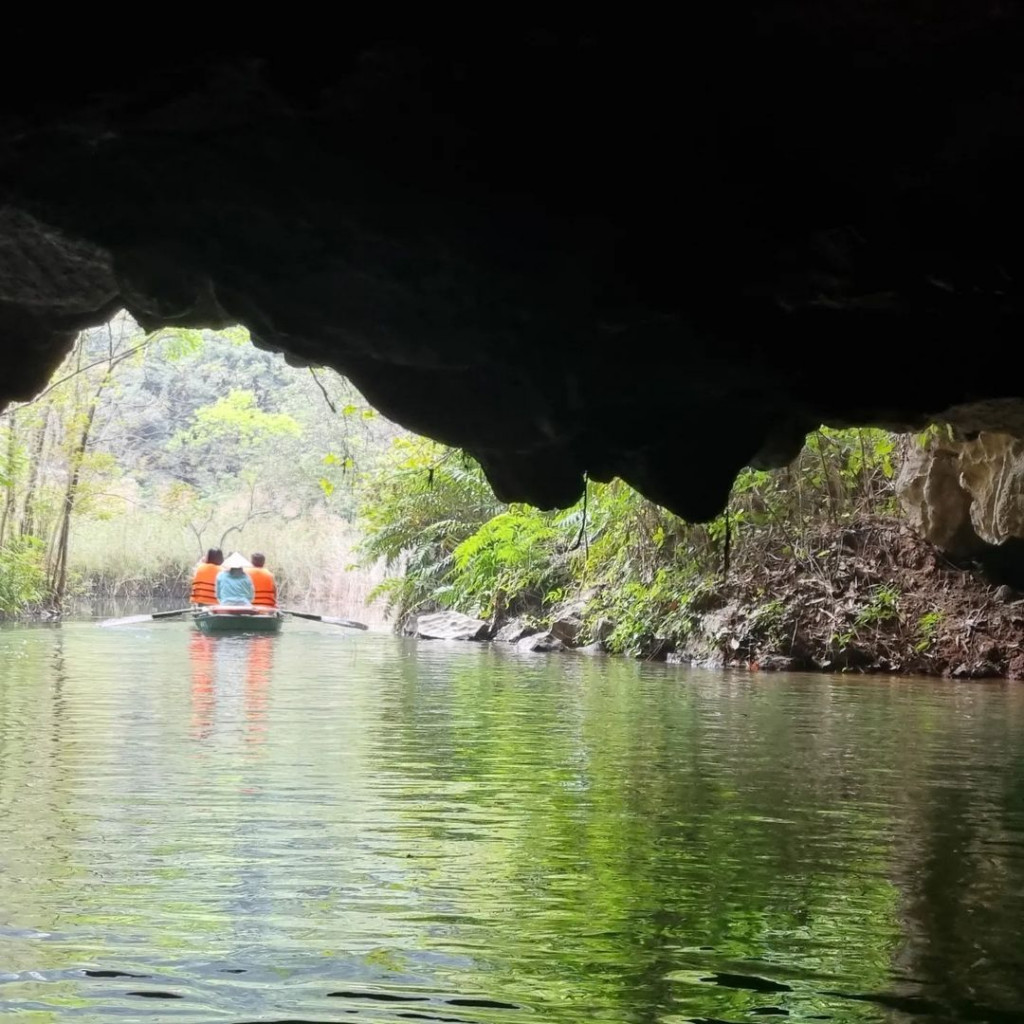Tam Coc – Bich Dong is a popular tourist destination in Ninh Binh, only 2 hours transfer from Hanoi. Coming here, you can visit many interesting grottoes by bamboo boat and listen to stories about historical figures related to this area.
History of Tam Coc – Bich Dong
According to historical documents, the King Tran Thai Tong, after ceding the throne to his son Tran Thanh Tong in 1258, often went on excursions to admire beautiful sceneries of the country.

One day, when the king came to Vu Lam area, he saw a huge mountain range, with a river (called Ngo Dong river) flowing through the mountain and creating three flooded caves (Hang Ca, Hang Hai and Hang Ba).
The king went on a boat to visit three caves and was impressed by the charming scenery of the mountains. So he decided to build a small pavilion in Hang Ca as a place to rest.
The Tam Coc – Bich Dong area was discovered under Tran Dynasty. Thank to the rugged terrain (surrounded by mountain range and narrow valley) it was used as the base of Tran’s solders during the 2nd resistance war against the Nguyen – Mong invaders in 1285. Later it also became a defense position for our troups during the resistance war against the French colonialists (1946-1954).
Nowadays, it becomes a popular destination for not only Vietnamese but also for international travellers.
How to visit?
Visitors will take the boat trip from Dinh Cac wharf along Ngo Dong river and go inside the valley. Following the rhythm of rowing, you are immersed in the green color of rice fields stretching along the river bank. During the boat trip you will see Van mountain, Thai Vi temple which is hidden behind the mountains.

In the rainy season, Tam Coc – Bich Dong looks like a “Halong Bay on land”. When entering Hang Ca, the first cave, visitors will feel a cooling atmostphere and admire wonderful natural beauty of stalactites hanging down in many different shapes. This is the largest and most beautiful cave of Tam Coc.
Then you will continue to visit Hang Hai. This cave is shorter and narrower. On the ceiling of the cave there are also many stalactites. Those who like to explore can take a boat about 2 km more to visit the Fairy Stream. According to legend, in the past fairies often came down to bath in this area, so it is called Fairy Stream.

The last cave is Hang Ba. Here the river becomes narrower and shallower. The two sides of the river are low-lying fields, then surrounded by rocky mountains forming a small valley. Entering Hang Ba, visitors will feel cool in summer and warm in winter.
After back to the pier tourists should visit Bich Dong pagoda. It is ranked as the second most beautiful cave in the north Vietnam, just after Huong Tich cave.
Bich Dong Pagoda was built on a large scale from the beginning of the Le Dynasty. In the temple, there is a bell cast from the King Le Thai To’s dynasty (1428-1433) and there are tomb towers of the monks who built the pagoda.
Till Canh Hung period (1740-1786), the pagoda was restored and expanded, with three more pagoda Chua Ha, Chua Trung, Chua Thuong based on the mountainside.
Tam Coc – Bich Dong is a great combination of nature and people to become an impressive landscape complex. In 2012, along with Hoa Lu Ancient Capital’s historical and cultural relic site and Trang An scenic spot, Tam Coc – Bich Dong was ranked as a special national relic site.




